
Alto Maipo
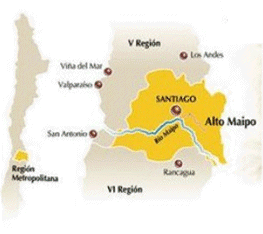
The Alto Maipo project is a 531MW run-of-river hydro plant located in the mountains just outside of Santiago Chile. The Project includes two powerhouses with 67Km of tunnel, with an average depth 800 M, and 5 intakes. The design minimizes both visual and ecological impacts of the facility; all the intakes take limited flow so as to not inhibit the ecological flow of water, and both powerhouses are located completely underground. Completion is expected in 2020.
For this project, my involvement over a two-year period during the development phase included:
- Review of the basic design
- Participation in corporate independent audit team reviews
- Assistance with development of specifications and contract documents
- Development of the project execution budget and construction management team organization recommendations
- Negotiation of the project contracts

OPGC II
The OPGC II project consists of two 660MW coal fired units being built at the site of the two existing 210MW units, in Banaharpalli village, Jharsuguda district of the state of Odissa, in India. The units are based on supercritical boilers, and will meet all the environmental requirements of the Government of India. The project also includes construction of a 40Km railroad to the location of a dedicated coal mine, development of the mine and coal handling equipment at the mine, a transmission line system, and an ash disposal site and systems. Completion is expected in 2018.
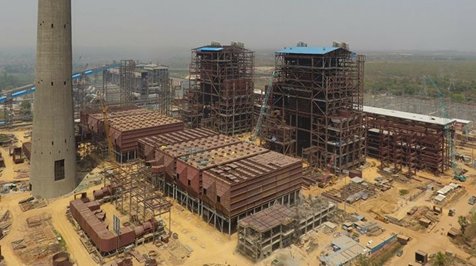
For this project, my involvement over a four-year period during the development phase included:
- Feasibility studies
- Review of the basic design
- Participation in corporate independent audit team reviews
- Assistance with development of specifications and contract documents
- Development of the project execution budget and construction management team organization recommendations
- Identification and evaluation of potential bidders
- Bid evaluation
- Development of initial project schedule
- Development of formal Project Execution Plan and related procedures
- Development of Risk Management Plan and initial risk identification
- Review of detailed project schedules from contractors
- Review of initial designs from contractors
- Development of contingency plan for new proposed Indian Government environmental regulations
- Served on construction management team until adequate staff had been recruited
Maisonloc
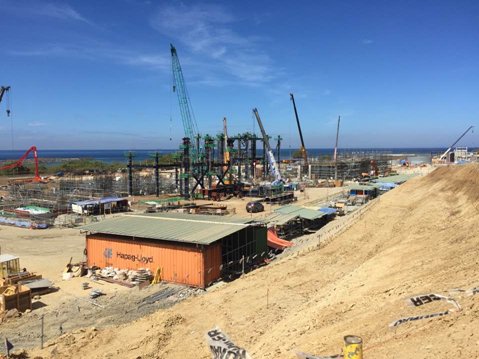
The Maisonloc project consists of two new 300MW coal fired units being built at the site of two existing 300MW Units, located in the town of Maisonloc in the Province of Zambales in the Philippines. The new units will be based on supercritical boilers and will be equipped with the latest pollution control technology including a Seawater FGD system. Completion is expected in 2019.
For this project, my involvement over a four-year period during the development phase included:
- Feasibility studies
- Review of the basic design
- Participation in corporate independent audit team reviews
- Assistance with development of specifications and contract documents
- Development of the project execution budget and construction management team organization recommendations
- Identification and evaluation of potential bidders
- Bid evaluation
- Development of initial project schedule
- Development of formal Project Execution Plan and related procedures
- Development of Risk Management Plan and initial risk identification
- Served with construction management team until adequate staff had been recruited
Maritza East (AES Galabovo)
The Maritza Project (later renamed AES Galabovo) is a 670MW lignite burning plant consisting of two 335MW units, wet SO2 scrubbers, ultra low NOx burners and related systems, with a major waste disposal facility located several Km away from the plant site. The plant is located near the village of Galabovo in Bulgaria, and remains the largest single foreign direct investment in Bulgaria. It became commercial in 2011. The prime contractor had failed on the project and was unable to bring it into commercial operation. Safety practices had also failed, and the project was running very late. The contractor was removed and the contract cancelled. I was part of a very small team brought in to take over the project and bring it over the line.

For this project, my involvement included:
- Assisting in evaluating the detailed status of the project
- determining which Subcontractors to keep and which to replace
- evaluating the project team and organization and determining what reorganization would look like and which team members to keep, and which to replace
- Assisting in locating and engaging contractors to take over the unfinished work
- Developing and staffing a working safety program and ensuring there would be no further lapses
- Locating specialists to redesign the low NOx combustion systems and bring them into compliance and reliable operation
Kilroot
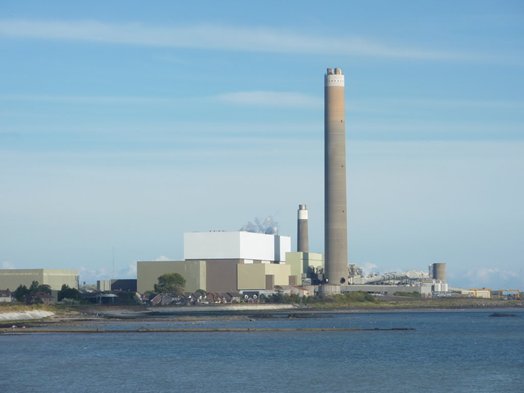
Kilroot is a 520MW coal fired plant consisting of two identical coal fired units. It is located on the Belfast lough near the town of Carrickfergus in County Antrim, Northern Ireland. In 2005, a project to bring the plant into compliance with the new EU environmental regulations was undertaken. The project was eventually scoped to include new control systems, Seawater FGD units, ultra low NOx burners and related technology, activated carbon injection systems for mercury control, baghouses, and SCNR systems. The project was completed in 2009, under budget and with only 1 LTA, and exceeded all expectations and requirements. During the project execution two 42MW simple cycle gas/oil fired turbine generator units were also installed.
For this project, I served as the Technical Director during the development and basic engineering phase, and as the Project Construction Manager during the construction and commissioning phase. As a result, my services included:
- Identification of potential qualified contractors
- Feasibility studies and basic design
- Development of specifications and contracts
- Development of the basic schedule
- Bid evaluation and contract negotiation
- Development of the project budget
- Participation in developing the project financial model
- Development of the project organization structure
- Recruiting the project staff
- Specifying, recruiting and contracting an Owner's Engineer organization for supply of specialty engineering services
- Development of the Project Execution Plan
- Development of the Project Safety Plan
- Development of the integrated project schedule
- Overall project construction management
- Progress reporting for each stakeholder
- Interface with financial partners and regulators
- Interface with the plant operations and maintenance team
- Determining and acquiring the initial spare parts inventory
Tisza II
The Tisza II project was a complete refurbishment of an 860MW oil/gas fired plant consisting of four identical 215MW units. The plant is located in the town of Tiszaujvaros Hungary, about 180 Km east of Budapest. The Plant was built in the 1970’s and based on Eastern European equipment. The project was scoped to replace or renew every component of the facility and return the plant to new condition with significant improvements in environmental performance and efficiency.

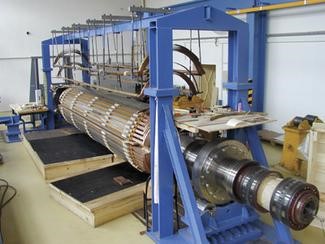
Major work included complete rebuild of each boiler with modifications to the economizer section, low NOx burners including a unique flue gas recirculation system, complete replacement and redesign of fuel oil unloading, handling, and storage systems, Replacement or refurbishment of each main power transformer and station service transformer, complete refurbishment of generators including both stator and rotor, replacement of excitation systems for each generator with modern static exciters, replacement of all plant instrument and control equipment and installation of a DCS, including complete replacement of each control room. development of a training simulator for the plant operators, refurbishment of plant firefighting system including addition of suppression systems inside of the plant and on major plant equipment. The work was done one unit at a time while the rest of the plant was operating, and finished on time, well under budget, and with no LTA’s, all of which required extensive planning and perfect execution. Plant efficiency was improved, NOx emissions were reduced by 56%, and SO2 emissions were reduced by 94%.
For this project, I held the title of Technical Director, and led all technical work during the development and basic engineering phase, and served as the project construction manager during the construction and commissioning phase. As a result, my services included:
- Feasibility studies and basic design
- Identification of potential qualified contractors
- Development of specifications and contracts
- Development of the basic schedule
- Bid evaluation and contract negotiation
- Development of the project budget
- Participation in developing the project financial model
- Development of the project organization structure
- Recruiting the project staff
- Specifying, recruiting and contracting an Owner’s Engineer organization for supply of specialty engineering services
- Development of the Project Execution Plan
- Development of the Project Safety Plan
- Development of the integrated project schedule
- Overall project construction management
- Progress reporting for each stakeholder
- Interface with financial partners and regulators
- Interface with the plant operations and maintenance team
- Determining and acquiring the initial spare parts inventory
Haripur
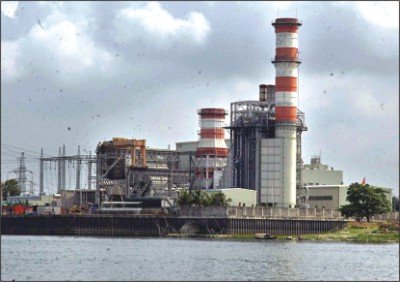
The Haripur Project Is a 360MW combined cycle power plant with a bypass stack to allow maximum operational flexibility. The gas turbine was supplied by Mitsubishi and the steam turbine was supplied by Fuji. The plant is located on the east bank of the Sitalakhya River in Haripur, Bangladesh.
For this project, I held the titles of Project Engineer and I&E Team leader. I was brought in during the last quarter of the construction process to help get the project through problems with the detailed completion and commissioning process. My services included:
- Recruiting and training the project and O&M staff
- Developing a formal QA/QC program, training the project team in the process, and managing the program
- Managing of the Instrumentation, control, and electrical construction and the plant commissioning process
- Supervising the operation of the plant O&M team once the plant was commercial
- Determining and procuring the initial spare parts inventory
- Managing and negotiating project close-out
Meghnaghat
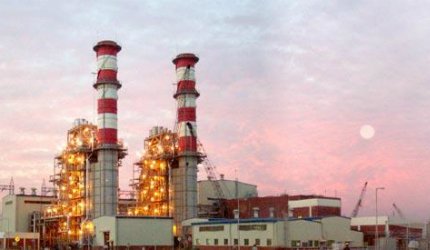
The Meghnaghat project is a 450MW two-on-one combined cycle power plant. The gas turbines were supplied by Ansaldo (V94.2 Technology), and the steam turbine was supplied by Fuji. The plant is located on the Meghnaghat river about 22 Km south of Dhaka, Bangladesh.
A unique accomplishment of mine on this project was the development of a “single button” start and load program on the plant DCS. This system allowed the unit operator to key in any desired load point from minimum operating load to full two-on-one plant output, then with a single command the controls would start and load the facility to the desired load, maintaining all GT, HRSG, and ST parameters within factory recommendations throughout the entire process, executing holds and soaks as required to protect the plant. The system functioned well and reliably, and was used for many years. I believe this was the first time this had been done.
For this project, I held the titles of Project Engineer and I&E Team leader, working from the start of construction through the operation of the finished facility. My services included:
- Recruiting and training the project and O&M staff
- Managing a formal QA/QC program
- Design and design review including working at the contractors and supplier’s offices with their professional staff.
- Contract administration
- Managing of the Instrumentation, control, and electrical construction and the plant commissioning process
- Supervising the operation of the plant O&M team once the plant was commercial
- Determining and procuring the initial spare parts inventory
- Developing maintenance management and inventory system
- Managing and negotiating project close-out
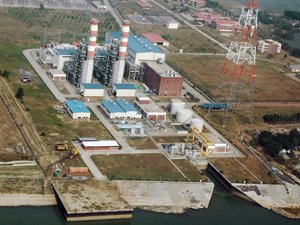
Ironwood

The Ironwood project is a 720MW two-on-one combined cycle power plant. The plant uses serial numbers one and three of the Siemens/Westinghouse 501G gas turbines. It is located just east of the city of Lebanon PA.
Two unique accomplishments on this project included; Solving the problem of not having useful internet connections at the site by finding a supplier of satellite based internet system and working with the supplier to develop a site system for use by the project team and operating plant, and working with the DCS supplier to develop a significantly improved MMI for the DCS. The enhancements were used in all the future applications of that DCS system. `
For this project, I held the titles of Project Engineer and Control Room Team Leader. My services included:
- Design and design review including working at the contractors and supplier’s offices with their professional staff.
- Construction supervision, particularly the Instrumentation, control, and electrical construction and the plant commissioning process
- Led QA/QC program development and operation
- Contract administration
- Participating in the recruitment and training of the O&M staff
- Assisting in determining and procuring the initial spare parts inventory
- Developing maintenance management and inventory systems
Somerset
The Somerset project is a 675MW nominal pulverized coal fired Generating Station, with a single GE steam turbine generator set. The plant is located near Lockport, New York, on the shore of Lake Ontario. This plant was the first major power plant in the United States to have full flow wet FGD system and to be completely digitally controlled and monitored. The plant went operational in 1983. I worked at the plant for 18 years, and the plant remained near the top of the Power Magazine list of top 10 most efficient and reliable generating stations in the US for all of these years.
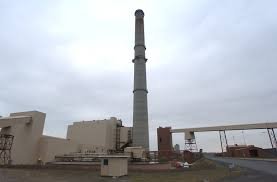
I started working at this plant during its initial construction phase, holding the position of Construction and Startup Engineer. In this position, my services included:
- Design review
- Supervision of installation and commissioning of the plant DCS, monitoring computer system, 13 programmable logic controller based systems, and all plant instrumentation, including calibration and testing of each instrument and its signal. Managed an 11-member team and 12 contracted instrument technicians.
- Assisting in the selection and recruiting of the Instrument and control system O&M team
- Development of the commissioning packages and procedures for the entire plant
- Leading the trouble shooting and correction of all problems found during the commissioning process
- Training of operators in use of the DCS and other digital systems
Following commercial operation, I held the title of Computer System Supervisor, managing an 11-member group (which was gradually reduced to 5 members over the years) with responsibility for the operation and maintenance of the plant instrument and control systems. The group was also responsible for the software development and engineering of all plant instrument and control modifications. The efforts of this group were a very significant factor in maintaining an availability of 96.5% or better, and a net heat rate below 9500 BTU/KWH.
While in this position, I reduced my group’s budget by 8 - 10% per year, and on my own initiative developed a working group with the stores manager and several of the other maintenance leaders which reduced inventory and maintenance costs for the entire plant by around 5% per year. This was accomplished by application RCM practices and the careful systematic review of inventory and work order records, resulting in revisions to preventative maintenance practices and schedules and changes to required inventory minimums. Other significant accomplishments included:
- The design, detailed planning, and supervision of replacement of the plant bottom ash control system while the plant remained in operation.
- The development of a circuit board repair shop, allowing us to avoid the costs associated with manufacturer’s repair programs
- Development of a test bed whereby proposed modifications to controls system programs and hardware could be physically tested, and repaired circuit boards could be tested before returning to inventory
- Locating and procuring inventories of spare parts from similar control systems being replaced at other plants around the country, allowing Somerset to postpone for many years replacement of systems considered obsolete by their manufacturers of produced by companies no longer in business.
- Designed and set up a plant database system
- Designed and specified a high-fidelity simulator for plant operator training
In 1999, AES Corporation purchased six power plants in New York (including the Somerset station) The other stations included in the deal were AES Westover, AES Cayuga, AES Greenidge, AES Hickling, and AES Jennison. After the acquisition, I held the position of Instrument and Controls Team Leader. My normal work was identical to the pre-acquisition position, but in the months leading up to the formal acquisition and the following few months afterwards, I led an effort to save all of the purchasing, inventory, and maintenance history data which was held on the original owner's corporate mainframes, convert the data to a modern general purpose database format, and develop a system wide network encompassing all six plants which provided CMMS, Inventory, and purchasing capabilities and allowed use of the plant history. The system worked, was reliable, and was used for many years.
Hope Creek Nuclear Station
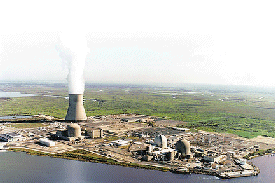
Hope Creek is a single unit 1268MW nuclear generating station located in Salem County New Jersey. It is based on a GE Boiling Water Reactor. The facility was originally designed for two units, although the second unit was never built. The plant went commercial in 1986.
I worked in the engineering and construction contractor’s design office, with the title of Senior Engineer and Control Systems Group Leader. In this position, I led the group responsible for the Instrument and control systems design for the Hope Creek project. I also served as the INPO reactor loose parts monitoring system specialist. A significant accomplishment for my group was the completion of the first Emergency Offsite Response Facility to be approved by the NRC following the Three Mile Island accident. Our design was used as an example for other facilities, and was completed far ahead of the required date.
In this position, my services included:
- Engineering review and integration of the control and instrument designs supplied by equipment vendors into the overall control scheme
- Design of cable and instrument tubing installations at the site
- Implementation of the latest technology available for reactor and machinery health diagnostic and protection equipment
- Specification and design of instruments and their installation
- Design of the Control Complex, with special consideration of ergonomics and MMI design
- Coordination with civil, mechanical, and electrical teams to ensure no interferences
- Inspections and oversight of construction at the plant site for control and instrumentation systems
Eckert Power Station
Eckert Power Station includes 6 units of pulverized coal electrical generators providing 351MW, and 6 units of travelling grate coal fired boilers which produced steam used at the nearby General Motors automobile assembly plant. I performed a series of plant electrical and instrument/control system modifications and upgrades over a 5-year period. For each of my projects, I was solely responsible for the design, specification, contracting, and construction supervision activities required to complete the work.
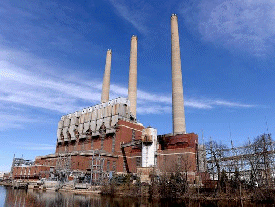
Some of the more significant projects included:
- Design of a replacement for the obsolete and nonfunctional control system for fly ash collection systems of the steam generating boilers. The original design required an operator to manually operate the individual ash hoppers, my design automated the sequence to operate in a manner similar to any modern system, although it was based on electro-mechanical components.
- Development of a relighting system for the entire plant, which dramatically improved visibility and safety while at the same time greatly reduced power costs and frequency of lamp replacement. The design used several different types of luminaires, giving a near daylight light color, and included all the required switchgear and wiring/wireways.
- Electrical and control design for a major upgrade required to comply with the first clean air act. The project included higher stacks and the addition of new precipitators for all of the generating units. My designs included new power and control systems for fly ash and bottom ash handling systems, new induced draft fans, and all associated switchgear and wiring/wireways.
Ottawa Street Power Station
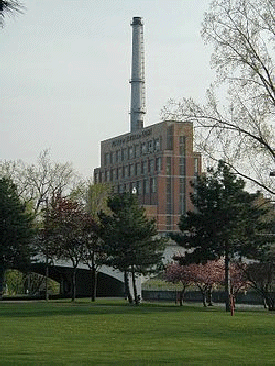
Ottawa Street Power station was located in the Downtown Lansing city center just blocks from the state capital. It was a unique art deco building which included 81MW of coal fired generation, and provided steam for the heating of the downtown city center and capital complex. It also included the original generator for the very first AC street lights in the US, which was kept operational and used to generate station service power for the facility. I performed a series of plant upgrades over a 5-year period. For each of my projects, I was solely responsible for the design, specification, contracting, and construction supervision activities required to complete the work.
Some of the more significant projects included:
- Replacement of outmoded ash and coal handling systems
- Upgrades to existing precipitator systems
- Development of a relighting system for the entire plant, which dramatically improved visibility and safety while at the same time greatly reduced power costs and frequency of lamp replacement. The design used several different types of luminaires, giving a near daylight light color, and included all the required switchgear and wiring/wireways.
Erickson Generating Station
Erickson Station is a 260MW rated single unit pulverized coal generating station located just outside of the Lansing Michigan city limits. The unit was commissioned in 1973.
For this project, I provided commissioning support for power and instrument/control equipment, under the supervision of project engineers.
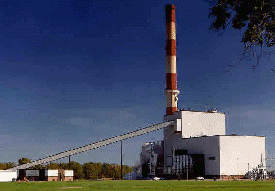
Other Significant Lansing Board of Water and Light Projects
For each of these projects, I was solely responsible for the design, specification, contracting, and construction supervision activities required to complete the work.
- Design and construction of a series of 138KV substations and switchyards which formed a loop system supporting Lansing’s expanding boundaries. The facilities were located for the most part in middle class neighborhoods and to minimize complaints of visual impacts were designed with extremely low profiles and the appearance of a residential home from the front. For this project, my services included Design of wiring/wireways and construction supervision.
- Development of a backup system for water pumping. The city did not have overhead storage to maintain positive water pressure in the event of a major power outage. The project Procurement of a very large used Diesel Generator set from a closing copper mine, purchase and installation of a large wound rotor motor driven pump and variable speed motor controller, and the development of an automatic control system to start and load the generator in the event of a power outage. The control system was based on a very early digital control system with custom programming, quite possibly a first in the utility industry. The system worked and proved reliable, and the choice of variable speed controller help with power factor control in the region of the city the where the pumping station was located.
Total Visits:
audio mastering online